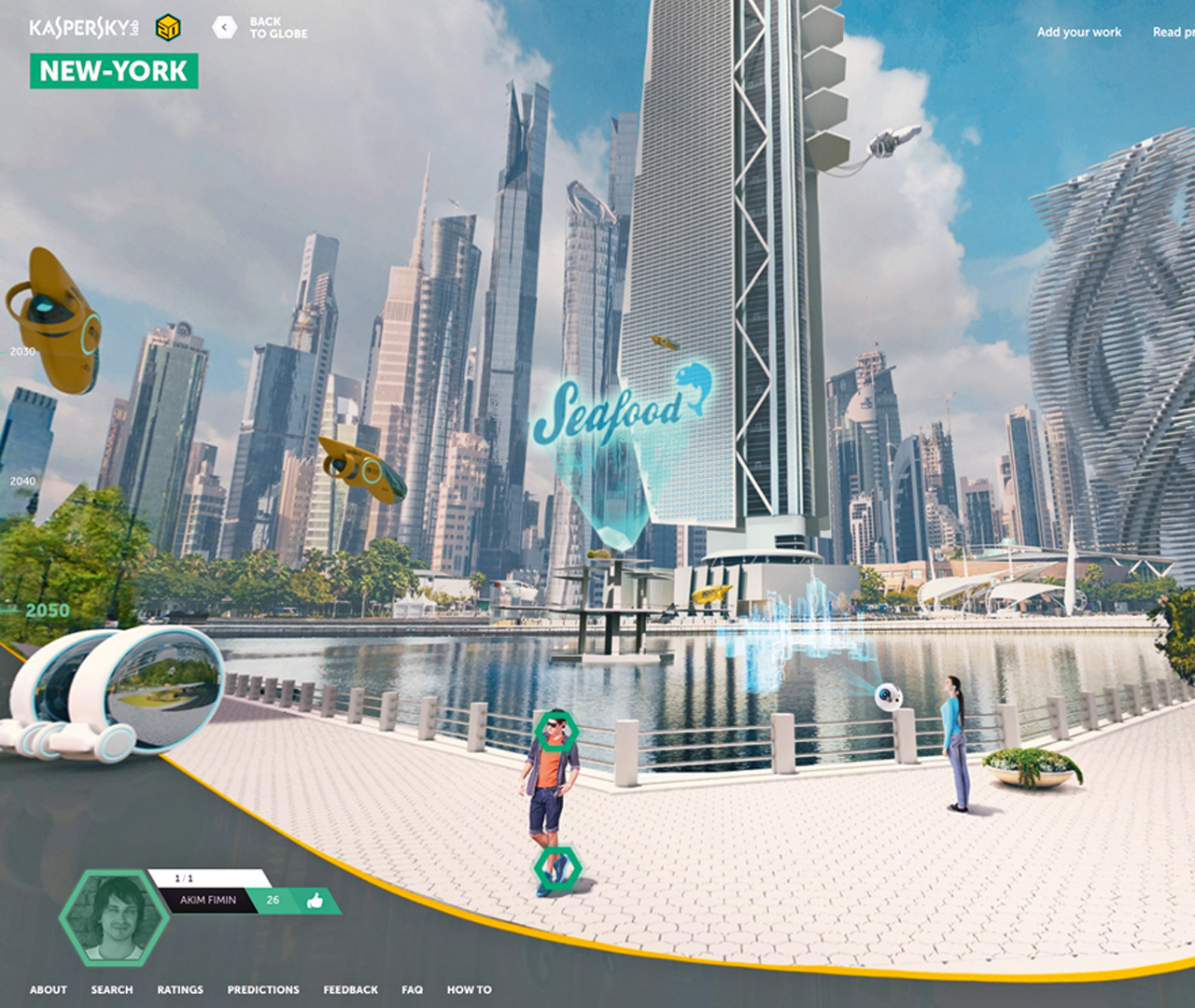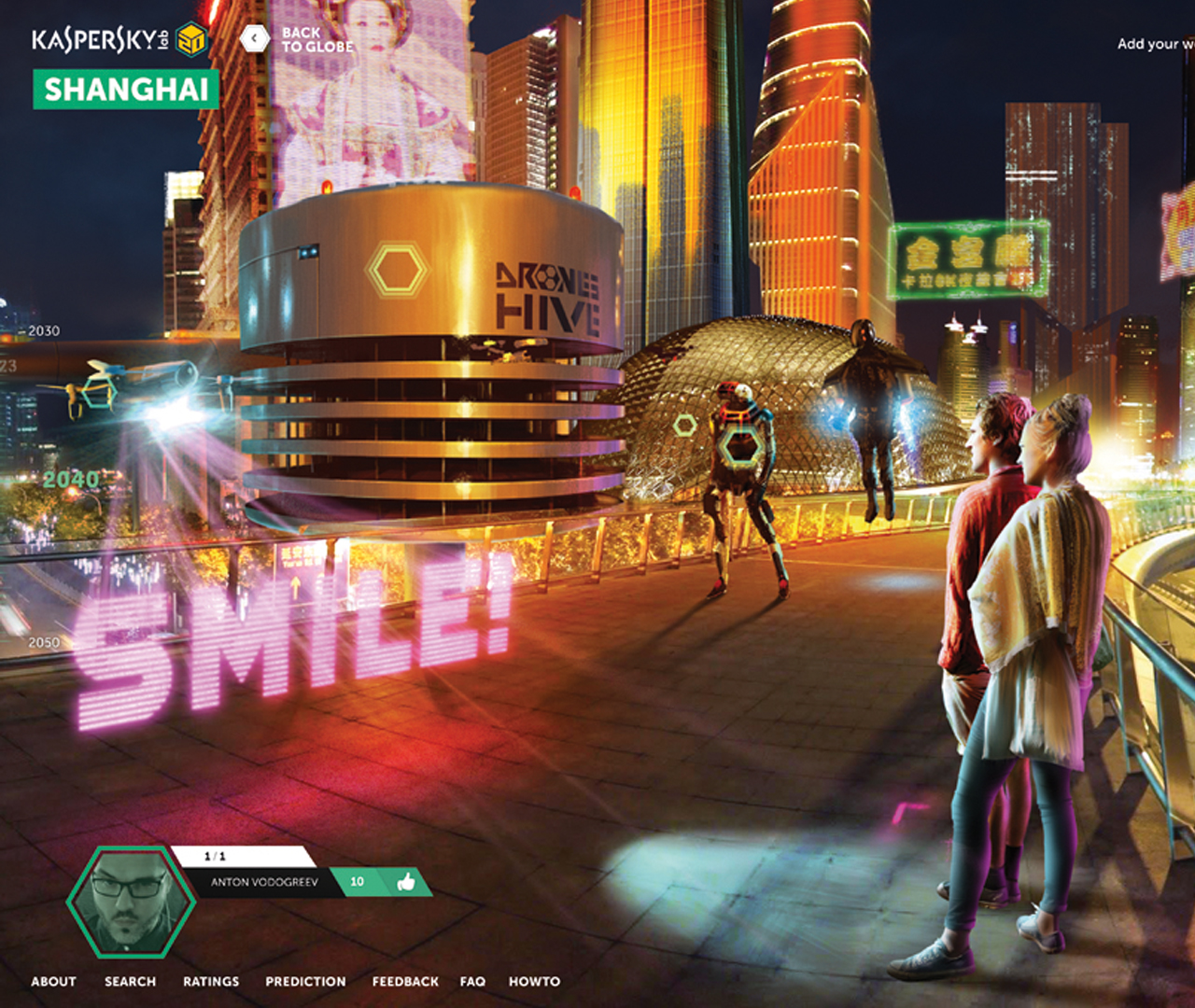“Earth 2050“ – communication design with an outlook on the future
On 26 October, the winners of the Red Dot Award: Communication Design 2018 will be honoured during the Red Dot Gala in Berlin. On this day for the first time, it will be revealed which laureates can be delighted about the competition’s highest single distinction “Red Dot: Grand Prix”. Every year, only a few works stand out from all entries. In 2017, only five projects were awarded this special accolade, among them, the interactive online platform “Earth 2050”.
The world in 30 years
On the occasion of the 20th anniversary of the software company Kaspersky Lab, famous futurists, artists, illustrators and scientists were asked to share their research and forecast for the years 2030, 2040 and 2050. On this basis, the designers from Possible Moscow created the interactive platform “Earth 2050”. It shows predictions and information about nearly every area of our live in the future – from robotics to our lifestyle and our environment to health care and education. At the futuristic locations, visitors can learn more about the different aspects of the future, express their opinions and share the cities on social networks.
“The project ‘Earth 2050’ with its interactive 3D map of the earth allows looking into the future. Illustrated predictions demonstrate how future changes might look. Particularly enticing about this ongoing project is that it also invites website visitors to contribute by commenting on the probability of the predictions and uploading their own illustrations. The website is beautifully done with smooth animations. It is fascinating to peruse for there is so much to discover,” said the Red Dot Jury about the awarded work.
Designer on detours
Anton Vodogreev, who is responsible for the illustrations of the project “Earth 2050”, works as an art director at the Possible Group since 2014. There, he has participated in the development of more than 50 projects. The Possible Group is an association of creative agencies with a focus on the digital area.
Before he started his career as a designer at ADV/web-engineering in 2010, he studied aeronautical engineering at the Samara State Aerospace University. When asked why he had become a designer, he replied, because it turned out that there were more drawings in his lecture notes than formulas. About his job, he values most that he can make people’s life easier and more beautiful. Behind his work is a simple design philosophy: logic and beauty.




